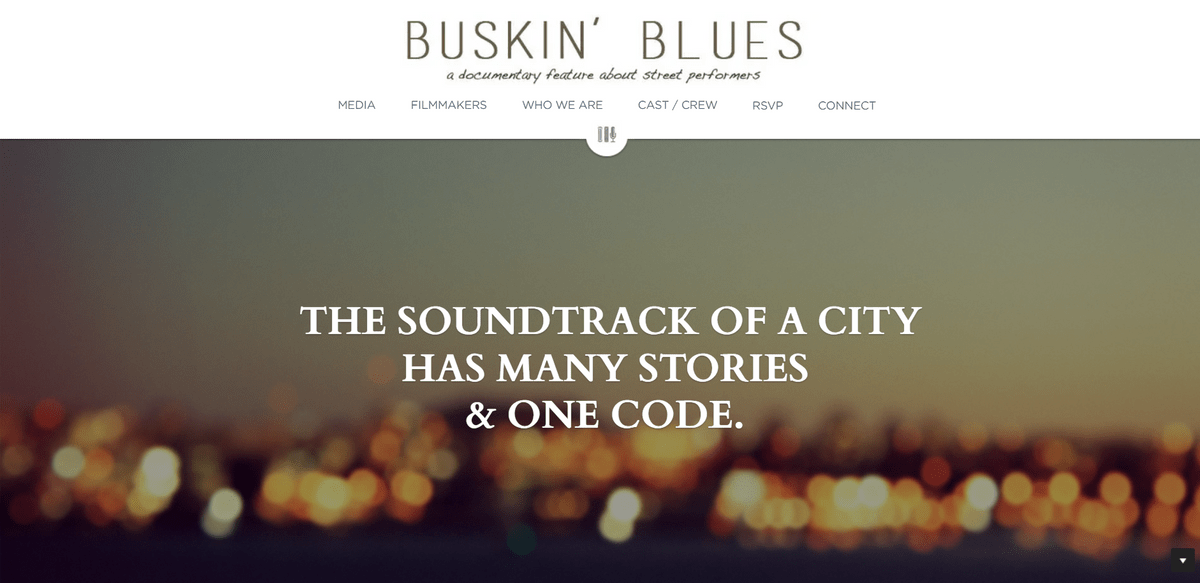Unlocking The Secrets Of Visual Branding For Success
Unlocking The Secrets Of Visual Branding For Success

Visual branding is a powerful tool that can have a significant impact on the success of a business. It encompasses using visuals, such as logos, colors, and fonts, to create a unique and memorable identity for a brand. In today's competitive market, where consumers are constantly bombarded with information, captivating your audience with visuals has become more critical than ever.
What is Visual Branding
Visual branding can evoke emotions, tell stories, and leave a lasting impression on consumers. By utilizing visually appealing elements in your brand's identity, you can create an instant connection with your target audience. Whether through an eye-catching logo or an aesthetically pleasing website design, visual branding helps differentiate your business from competitors and establish a strong presence in the market.
Captivating Your Audience with Visuals
In a world where attention spans are shrinking, capturing your audience's attention is crucial. Visuals have proven to be highly effective in grabbing and retaining attention. By incorporating compelling images, videos, and graphics into your marketing materials and online platforms, you can engage your audience on a deeper level and encourage them to explore further.
The Role of Visual Branding in Business Success
Visual branding plays a vital role in shaping how consumers perceive your brand. It helps convey the values and personality of your business while building trust and credibility among potential customers. A well-crafted visual brand identity sets you apart from competitors and creates consistency across all channels, reinforcing your brand message at every touchpoint.
By understanding the importance of visual branding and implementing an effective strategy, businesses can elevate their brand and stand out in a crowded market. In the following sections, we will delve deeper into the concept of visual branding, explore strategies for crafting a solid visual identity, examine the impact of visuals on brand perception, and discuss best practices for implementing visual branding. We will also analyze a case study on Strikingly's visual branding success and extract valuable lessons that can be applied to businesses of all sizes.
Now that we have laid the foundation let's dive into visual branding and discover how it can transform your business.
Understanding Visual Branding
Image taken from Heaven Shakes
Visual branding is a crucial aspect of any business's marketing strategy. It involves creating a cohesive and visually appealing identity representing the brand's essence. By effectively utilizing visual elements, companies can communicate their values, establish a strong presence in the market, and connect with their target audience.
1. Defining Visual Branding and Its Importance
Visual branding refers to using visual elements such as colors, fonts, logos, and imagery to create a consistent and recognizable identity for a brand. It encompasses everything from the design of a company's logo to the layout of its website and social media profiles.
The importance of visual branding must be balanced. In today's visually-driven world, consumers are constantly bombarded with information and have shorter attention spans. A strong visual brand identity helps businesses stand out from their competitors and capture their audience's attention.
2. The Elements of Visual Branding
The elements that make up visual branding include colors, typography, logos, imagery, and overall design aesthetics. These elements create a cohesive look and feel representing the brand's personality and values.
Colors play a significant role in visual branding as they evoke emotions and convey messages. For example, warm colors like red or orange can create a sense of excitement or energy, while cool colors like blue or green can evoke feelings of calmness or trust.
Typography refers to the choice of fonts used in all brand communications. Different fonts have different personalities; some are more formal and traditional, while others are modern and playful. Selecting the right font helps reinforce the overall message that the brand wants to convey.
Logos are one of the most recognizable aspects of visual branding. They serve as a symbol representing the entire brand in a single image or wordmark. A well-designed logo should be memorable, unique, and instantly recognizable.
Imagery plays an essential role in establishing an emotional connection with the audience. Whether through photographs, illustrations, or graphics, carefully chosen visuals can evoke specific feelings and reinforce the brand's message.
3. Unleashing the Potential of Visual Identity
A solid visual identity helps businesses differentiate themselves from their competitors and leave a lasting impression on their audience. It allows consumers to recognize and remember the brand quickly, building trust and loyalty.
By unleashing the potential of visual identity, businesses can effectively communicate their values, establish credibility in their industry, and create a consistent customer experience across all touchpoints.
Crafting a Visual Branding Strategy
Image taken from Leo Liu Design
Visual branding is a powerful tool that can help businesses establish a strong presence in the market. To effectively harness its potential, it is crucial to craft a well-thought-out visual branding strategy. This section will delve into the critical components of such a strategy, including identifying your target audience, incorporating the core values of your business, and developing consistency across all channels.
1. Identifying Your Target Audience
Understanding your target audience is one of the first steps in crafting a visual branding strategy. By identifying your ideal customers, you can tailor your visuals to resonate with them on a deeper level. Consider their demographics, interests, and preferences when creating visual elements such as colors, fonts, and imagery.
Understanding your target audience lets you determine which platforms or channels they will most likely engage with. This knowledge lets you focus your visual branding efforts where they will have the most significant impact and reach.
Your visual branding should reflect the core values and personality of your business. It should communicate what sets you apart from competitors and why customers should choose you over others.
Consider what emotions or feelings you want to evoke through your visuals. Are you aiming for professionalism and trustworthiness? Or creativity and innovation? You create a cohesive brand identity that resonates with current and potential customers by aligning your visuals with your core values.
3. Developing Consistency Across All Channels
Consistency is critical when it comes to visual branding. It helps build recognition and establishes trust among consumers. Maintaining consistent visuals ensures that customers can quickly identify and connect with your brand, whether on your website, social media platforms, or physical marketing materials.
Establish guidelines for using colors, fonts, logos, and other visual elements to achieve consistency across all channels. This will help maintain a cohesive look throughout all your brand touchpoints. Character also extends to the tone and messaging used in your visuals, ensuring a unified brand experience for your audience.
Crafting a visual branding strategy involves careful consideration of your target audience, core values, and consistency across all channels. You can create a powerful and memorable brand presence by understanding who you are targeting, incorporating your business's values, and maintaining a consistent visual identity. Strikingly is an excellent example of a company that has successfully implemented a comprehensive visual branding strategy to stand out in the competitive market.
The Impact of Visuals on Brand Perception
Image taken from Buskin Blues
Visual branding plays a crucial role in shaping how consumers perceive a brand. Using visuals can create a solid first impression, build trust and credibility, and help businesses stand out in a competitive market.
1. Creating a Strong First Impression
When it comes to visual branding, first impressions matter. A well-designed logo, website, or social media profile can instantly capture the attention of potential customers and leave a lasting impact. Strikingly's visual branding success is a prime example of how creating a visually appealing and memorable first impression can attract and engage audiences.
Visuals have the power to evoke emotions and establish trust with consumers. A consistent visual identity across all channels helps build brand recognition and credibility. By utilizing cohesive colors, fonts, and imagery that align with the business's core values, brands can create an emotional connection with their audience.
3. Standing Out in a Competitive Market
In today's saturated market, standing out from competitors is essential for success. Visual branding allows businesses to differentiate themselves by showcasing their unique personality and values through visuals. By incorporating elements that reflect their brand identity into their marketing materials, companies can create a distinct visual presence that sets them apart.
Strikingly's visually appealing logo is an excellent example of creating a solid first impression through visual branding. Its bold colors and sleek design immediately grab attention while conveying professionalism and creativity.
By focusing on creating visually captivating content that aligns with their target audience's preferences and expectations, businesses like Strikingly can effectively communicate their unique value proposition while leaving a memorable impression.
The impact of visuals on brand perception must be considered. Visual branding helps create a solid first impression, build trust and credibility, and differentiate businesses in a competitive market. Companies can elevate their brand and drive business success by crafting a cohesive visual identity that resonates with their target audience.
Visual Branding Best Practices
Image taken from Cynthia Blair
Visual branding is a crucial aspect of building a solid brand identity. By implementing the proper practices, businesses can create a visible presence that resonates with their target audience and sets them apart from competitors. In this section, we will explore some best practices for visual branding.
1. Choosing the Right Colors and Fonts
The choice of colors and fonts plays a significant role in visual branding. Colors evoke emotions and can communicate the personality of a brand. It is essential to select colors that align with your brand's values and target audience. Fonts, on the other hand, contribute to your brand's overall look and feel. They should be legible, consistent, and reflect your brand's tone.
To illustrate this point further, let's look at Strikingly's visual branding strategy. They use vibrant colors like orange and blue to convey a sense of creativity, energy, and trustworthiness. Their font choices are clean and modern, reflecting their commitment to simplicity and user-friendly design.
2. Creating a Memorable Logo
A logo is often the first visual element that comes to mind when considering branding. It serves as the face of your business and should be memorable, unique, and representative of your brand's values. A well-designed logo can leave a lasting impression on customers.
Take Strikingly as an example again; their logo features an abstract bird symbolizing freedom, creativity, and growth – all qualities aligning with their mission to empower individuals to build their online presence.
3. Utilizing Visuals on Websites and Social Media
Similarly, leverage social media channels to reinforce your visual branding strategy. Create visually appealing posts that maintain consistency across platforms. Incorporate your brand's colors, fonts, and logo into your social media content design.
By utilizing visuals effectively on websites and social media, businesses can create a cohesive brand experience for their audience.
Implementing best practices in visual branding can elevate a business's brand identity and make a lasting impression on its target audience. Companies can establish a solid visible presence that sets them apart from competitors by choosing the right colors and fonts, creating a memorable logo, and utilizing visuals effectively on websites and social media platforms like Strikingly does.
Remember to carefully plan your content to stay within the 2000 token limit while ensuring each keyword appears at least thrice.
Strikingly & Visual Branding Success
Image taken from Tabla's Gourmet
Strikingly, a website builder platform has achieved remarkable success through its effective visual branding strategy. By examining their visual identity and analyzing their branding approach, businesses can learn valuable lessons and takeaways for their visual branding endeavors.
Examining Strikingly's Visual Identity
Strikingly has established a strong visual identity that resonates with its target audience. Their logo, featuring a bold and modern font with a vibrant blue color, captures attention and reflects the company's innovative nature. Their website design's use of clean lines and simplicity further reinforces their commitment to user-friendly experiences.
The choice of colors in Strikingly's visual branding is also worth noting. The combination of blue and white creates a sense of trustworthiness and professionalism, while the occasional use of orange adds an element of excitement and energy. This color scheme is consistently applied across all their marketing materials, reinforcing brand recognition.
Strikingly Visual Branding Strategy
Strikingly's visual branding strategy revolves around effortlessly empowering individuals to create stunning websites. Their visuals convey this message by showcasing beautifully designed websites using their platform. By leveraging high-quality imagery that highlights the versatility of their product, they effectively communicate the value they offer to potential customers.
Consistency is vital to Strikingly's visual branding strategy. Whether on their website, social media platforms, or marketing materials, they maintain a cohesive look and feel that aligns with their brand identity. This consistency helps build customer trust as they encounter consistent visuals across different touchpoints.
Lessons Learned and Takeaways for Businesses
A critical lesson from Strikingly's success in visual branding is the need to understand your target audience thoroughly. Knowing your ideal customers, you can tailor your visuals to appeal directly to them. Strikingly achieves this by showcasing websites that cater to various industries and niches, demonstrating their versatility and ability to meet diverse customer needs.
Another takeaway is the power of consistency in visual branding. By maintaining a unified visual identity across all channels, businesses can establish a strong brand presence and increase brand recognition. Strikingly's consistent use of colors, fonts, and imagery creates a cohesive experience for their audience, making it easier for them to remember and identify the brand.
Strikingly's visual branding success serves as an inspiration for businesses looking to elevate their own brand identity. By examining their visual identity, analyzing their strategy, and implementing the lessons learned, companies can harness the power of visual branding to captivate their audience and achieve business success.
Build Stunning Websites With Strikingly!
Image taken from OOO Graphic Design
Visual branding is a powerful tool that can significantly impact the success of a business. By understanding visual branding and how to implement it effectively, businesses can elevate their brand and stand out in a competitive market.
Harnessing the power of visual branding allows businesses to captivate their audience and create a solid first impression. Visuals can evoke emotions, convey messages, and leave a lasting impact on viewers. By carefully choosing color fonts and creating a memorable logo, businesses can make a visual identity that resonates with their target audience.
Elevating your business with a solid visual identity helps create brand recognition and builds trust and credibility. Consistency across all channels, including websites and social media platforms, reinforces the brand's message and values. By incorporating the core values of your business into your visual branding strategy, you can establish an authentic connection with your audience.
Implementing an effective visual branding strategy requires careful planning and understanding your target audience. Identifying your ideal customers will help tailor your visuals to resonate with them specifically. Additionally, developing consistency across all channels ensures your brand remains cohesive and easily recognizable.
Harnessing the power of visual branding is crucial for business success in today's visually-driven world. By elevating your business with a strong visual identity and implementing an effective strategy, you can create a lasting impression on your audience while standing out from competitors. Consider the impact of visuals - embrace them as an integral part of your overall brand strategy.
Want to have a strikingly awesome website for your business? Chat with us today!






